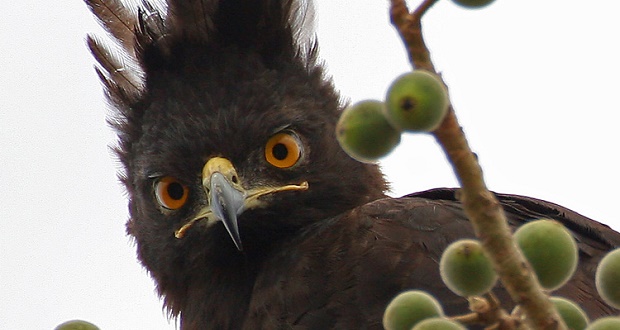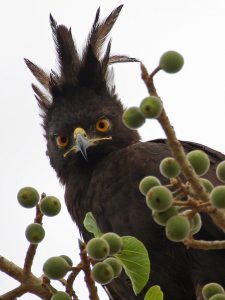Contributed by Len McKenzie —
OAKHURST — Here’s the event we’ve all been waiting for, as it was cancelled last week due to inclement weather and is now scheduled for Thursday, Jan. 19.
Sierra foothill residents who have enjoyed Mariposan Matthew Matthiessen’s slide programs for the Yosemite Area Audubon Society (YAAS) or other local organizations know the John C. Fremont Healthcare District CFO as an exceptional bird photographer, captivating speaker and international travel enthusiast.
The monthly Yosemite Area Audubon program will feature another virtual birding and wildlife adventure by Matthiessen in a faraway locale, arguably an unconventional birding destination that is likely on few, if any, local bucket lists.
Having previously entertained YAAS audiences with stunning images and engaging stories about his birding experiences in Peru, Brazil, Cuba, Ethiopia, Borneo and Ecuador, Matthiessen will take viewers this time to Uganda. His slide presentation, “Shoebills to Silverbacks: Wildlife of Uganda,” will begin at 7 p.m. at the New Community United Methodist Church on Road 426.
A compact equatorial country within the Nile basin on the East African Plateau—and the world’s second most populous landlocked country—the Republic of Uganda achieved independence in 1962. Most of its history since then has been marked by internal and external conflicts, massive human casualties and displacements, and political instability and upheaval. Civil warfare, the 1976 Air France hijacking at Entebbe airport and the atrocities of the brutal dictator Idi Amin in the 1970s characterize Uganda’s image in many Americans’ minds.
In spite of the cultural unrest, other social and economic issues, and its small geographic size, Uganda is one of the world’s most ecologically rich and diverse countries. Called the “Pearl of Africa,” it encompasses 60 protected areas and 10 national parks. Harboring abundant flora and fauna, it is home to more than 1,000 species of birds, a number of them endemic (occurring nowhere else) and 13 species of primates, including more than half of the world’s mountain gorillas.
Matthiessen traveled to Uganda—one of the world’s “great birding destinations,” he says—in 2005 during a time of relative calm. The Entebbe incident had intrigued and amazed him as a child and piqued his interest in the country itself.
Matthiessen’s experience in Uganda included a stay in the “gorilla camp” in Bwindi Impenetrable National Park, where 14 foreign tourists were abducted by Rwandan rebels in 1999. While his presentation will highlight some of the birds and other wildlife he saw on his trip, he will likely touch on some of those peripheral experiences as well.
A University of Tennessee graduate, Matthiessen began birding while growing up in Thailand, developing a lifelong love for international birding. He has since pursued his birding passion in many countries throughout the world and captured thousands of images through his camera lens.
Matthiessen’s adventures have also produced some memorable, heart-pounding experiences. He has lived through two bloody coups—a successful one in Thailand and a failed one in Zambia. He has been charged by an elephant, stalked by a lion and threatened by a crocodile. He has kissed a cobra, push-started a Jeep amidst a lion pride, had the spotlight die while next to a leopard, captured a 14-foot python and almost tripped over a sleeping silverback gorilla.
Like all Yosemite Area Audubon programs, Matthiessen’s presentation is open and free to the public, although donations to defray program costs and to support the chapter’s local activities are welcome. Call (209) 742-5579 or visit www.yosemiteaudubon.org for more information about the program and the free field trips also offered by YAAS .
The mission of the National Audubon Society, the namesake of noted 19th-century naturalist and bird painter John James Audubon; its state affiliate, Audubon California; and local chapters such as the Yosemite Area Audubon Society is to conserve and restore natural ecosystems, focusing on birds, other wildlife and their habitats for the benefit of humanity and the earth’s biological diversity.





